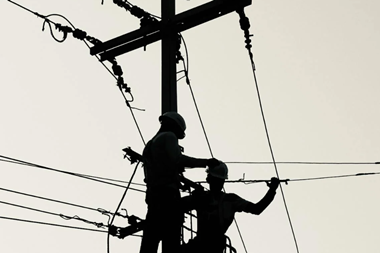Australia’s longest-established real assets fund manager, with a story spanning many decades, has been consigned to history. In 2003, financial services company AMP created AMP Capital to run its burgeoning private markets business. Eventually it managed A$178bn (€121bn) in assets, including real estate and infrastructure.
Last week, in two simultaneous deals, AMP Capital’s domestic real estate and infrastructure platform was sold to Dexus, and its global infrastructure platform went to the US-based DigitalBridge.
AMP had previously sold its newest business – its infrastructure debt arm – to US private equity group Ares Management, while the AMP Capital global equities and fixed income business went to Macquarie Asset Management.
The dismantling of AMP Capital is a blow to the Australian fund management industry. AMP is now reduced to a financial services company that sells superannuation, life insurance and financial planning and advice.
Born in 1849 as the Australian Mutual Provident Society, owning and developing property was part of the insurer’s DNA. AMP built the offices that housed its sprawling businesses around the country.
The company’s heyday came in the 1990s and 2000s, with AMP becoming an influential landlord of premium office towers and regional shopping centres in Australia. By 1990, the AMP property portfolio was worth A$9bn. It grew quickly with the launch of Australia’s universal superannuation industry.
AMP’s reputation and strength meant that it was a manager of choice for some industry super funds. The main reason was solid performance. Its largest flagship fund, the AMP Wholesale Office Fund (AWOF), owns more than A$7bn in assets, including landmark office towers such as Quay Quarter in Sydney and Collins Place in Melbourne. It is consistently a top performer in the sector’s benchmark, the MSCI/Mercer office index.
When it comes to infrastructure, some say AMP has led its domestic and global competitors, having made more than 120 separate unlisted equity investments since 1988. AMP Capital’s global infrastructure business flourished under the leadership of Boe Pahari, owning a diverse range of assets from airports to North Sea rescue vessels and digital infrastructure.
Ironically, the unpicking of the AMP group can in part be traced to the promotion of Pahari as CEO of AMP Capital in 2020. This became one miscalculation too many by the AMP board. Another was not heeding the emerging focus of investors – and society at large – on issues of transparency and governance.
Speaking anonymously to a number of superannuation funds and investors close to AMP Capital, many point to the decision to replace Adam Tindall, the CEO of AMP Capital, with Pahari. During Tindall’s leadership, AMP Capital grew its assets under management by about A$43bn and increased the operating earnings of the business by more than 43%.
The backlash to Pahari’s appointment was marked. Outraged colleagues leaked stories to the media that AMP had previously to settled with a former female employee who accused Pahari of sexual harassment.
It did not help that AMP itself was dealing with findings of misconduct by the Haynes Royal commission into financial services. Along with the major banks, AMP was found to have committed a series of misdeeds, including charging fees for no service.
From 2019, the chairs of the AMP board, Catherine Brenner and her successor David Murray, and CEO Craig Meller and his successor Francesco de Ferrari resigned within months of their appointments.
It was during this period of uncertainty, in October 2020, that the US private equity group Ares made an unexpected A$6.4bn bid to take over the entire company. Those discussions went nowhere, but they did result in Ares in December 2021 snaring AMP Capital’s global infrastructure debt business for A$428m.
It was during conversations with Ares that AMP management conceived the idea of a demerger – to hive off the private market business and to list it as a separate entity, under the name of Collimate Capital.
The demerger idea did not fly with investors. “I think the demerger has been dead for months,” says one investor. “We certainly didn’t support it. Neither did other investors in AMP funds support the demerger plan.”
Institutional investors told IPE Real Assets that there was no communication with investors as they watched AMP Capital’s assets carved off and sold “piece by piece” in recent months.
AMP Capital also went through a difficult patch in the aftermath of the global financial crisis. In 2010, it was forced to sell its Meridien retirement business to JP Morgan, taking a large ‘haircut’ to free itself from the retirement business once valued at more than A$1bn.
Then, in 2012, AMP dissolved a 50-year partnership with retail giant Westfield and split up ownership of A$6bn worth of shopping centres. The break-up was caused by disagreement, largely over capital expenditure.
For AMP Capital these were hiccups and it continued to grow – until now. Many lament the loss of a great Australian company. For some institutional investors, it is the loss of a once-prominent real assets fund manager.
Some muse that AMP could have been as big as the Macquarie Group today. AMP’s market capitalisation is now A$3.8bn and Macquarie A$79.4bn – just 10 years ago they were neck and neck at about A$12bn each.


















